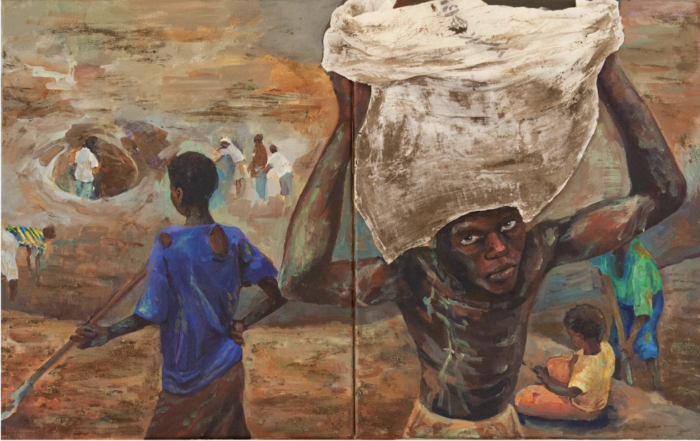Every month, the Visual Arts Department selects Artists of the Month from the different disciplines. Two of the five February Artists of the Month winners, Erin Yu ’24 and Kalani Zionpur ’24, shared their work with The Bradford.
Erin Yu ’24 – Drawing and Painting
For Yu, her work is a place to produce metaphors for topics ranging from mining practices in the Congo to the legacies of pandemic isolation. Selected as a 2-D Artist of the Month for her work in Drawing and Painting, Yu’s teachers and peers have recognized her art for its meaningfulness and attention to detail.
Using mostly acrylic and watercolor, Yu favors working with cool tones and finishing her pieces with colored pencil, though she sometimes uses untraditional components, such as torn schoolwork, to add more dimension.
For Yu, the symbolic nature of many of her works is central to her personality as an artist.
“I was never one to autonomously create a still life [piece]. I like to add a figurative twist,” said Yu.
Despite creating larger allegorical works, Yu finds pleasure in the minscule details that she works to perfect.
“The real fun part starts when I get to draw in an individual lash, dimples, wrinkles, or strands of hair,” said Yu.
“The Curtain Calls For The Paper Doll,” one of Yu’s pieces she created in 2023, features several of these techniques in the face and hair of the woman central to the piece and also incorporates scraps of schoolwork. Working on pieces such as this one, Yu has refined her mental strategy during her development as an artist.
“I usually try not to overthink, because then it gets too complicated and too muddled. Essentially, if I think less, it turns out better,” said Yu.
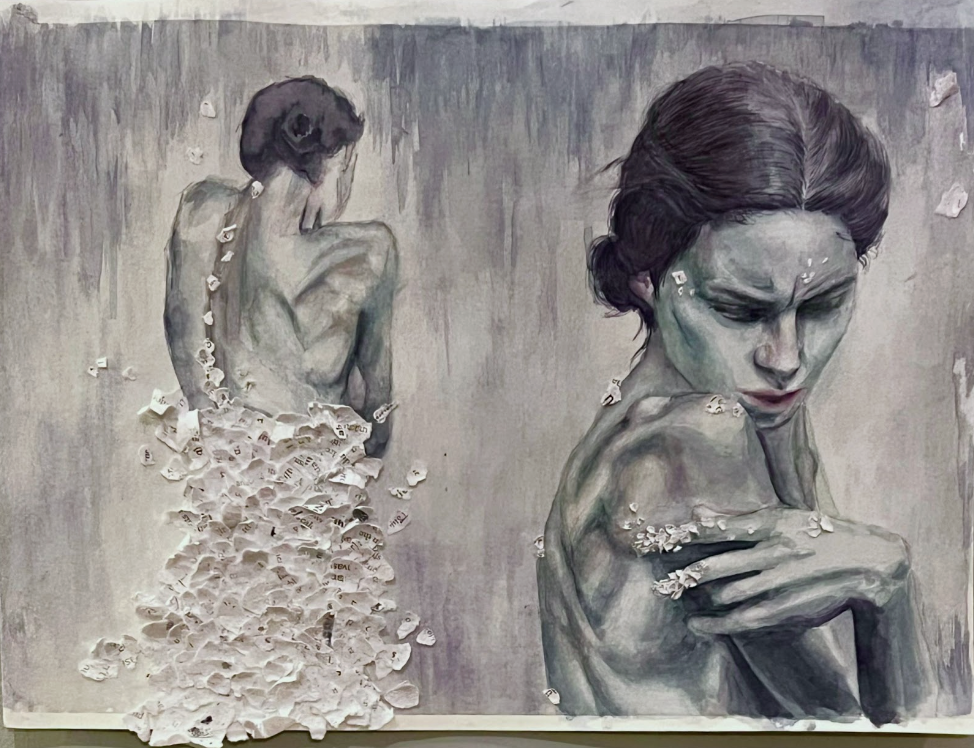
In many of her other pieces from the last year, such as “Unseen Depths,” Yu thought about the double meanings of the space she featured in her work.
“Bathrooms can symbolize a space of self care, but can also be spaces of desolate isolation. It’s up to how you interpret it,” said Yu.
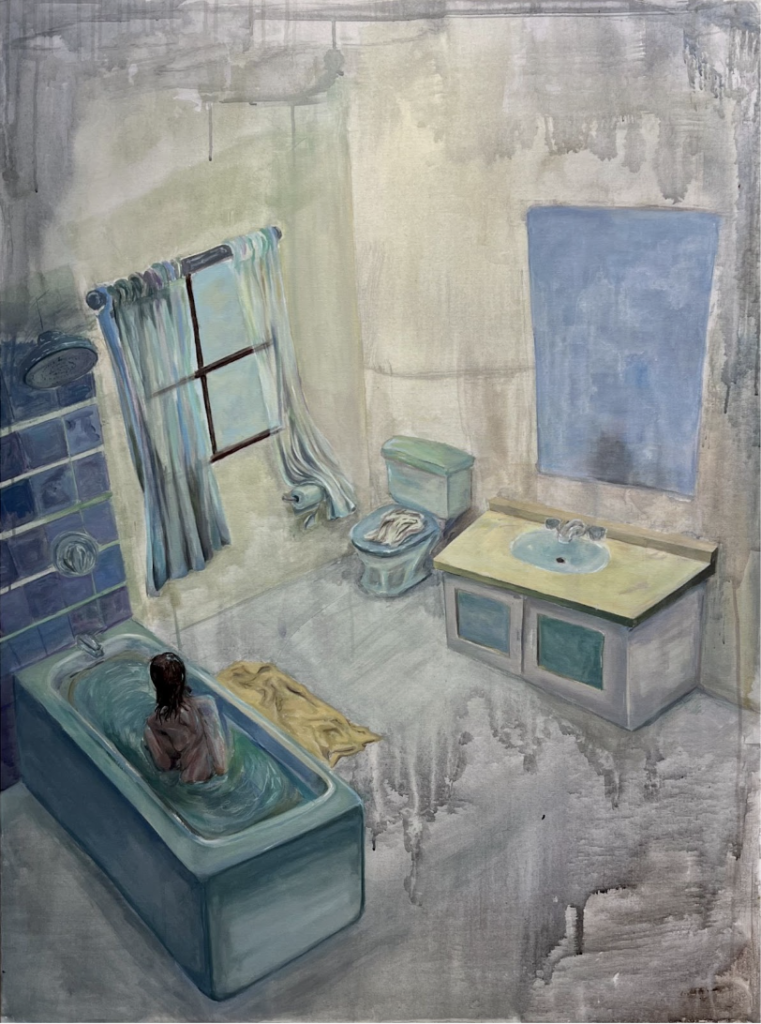
In an earlier work of Yu’s, her intended meaning comes to the observer more obviously. “The Absence of Their Childhood” (2021), inspired by a unit in history class about human rights violations, working conditions, and health impacts of mines in the Congo, uses acrylic alongside linen and dirt to highlight the experiences of child laborers.

As Yu’s art career at the high school level comes to a close during her senior year, she is still creating several pieces about the environment, and she is thankful for the Artist of the Month recognition.
“I’m happy that I get to share my pieces with the school,” said Yu.
Kalani Zionpur ’24 – Ceramics
For Zionpur, ceramics offer the opportunity to make usable pieces through a very physical throwing process and the artistic decisions of glazing.
“I love creating with my hands and having something tangible to work with. I can continue changing the clay and shaping it the way I want until I achieve my desired piece, which I love,” said Zionpur.
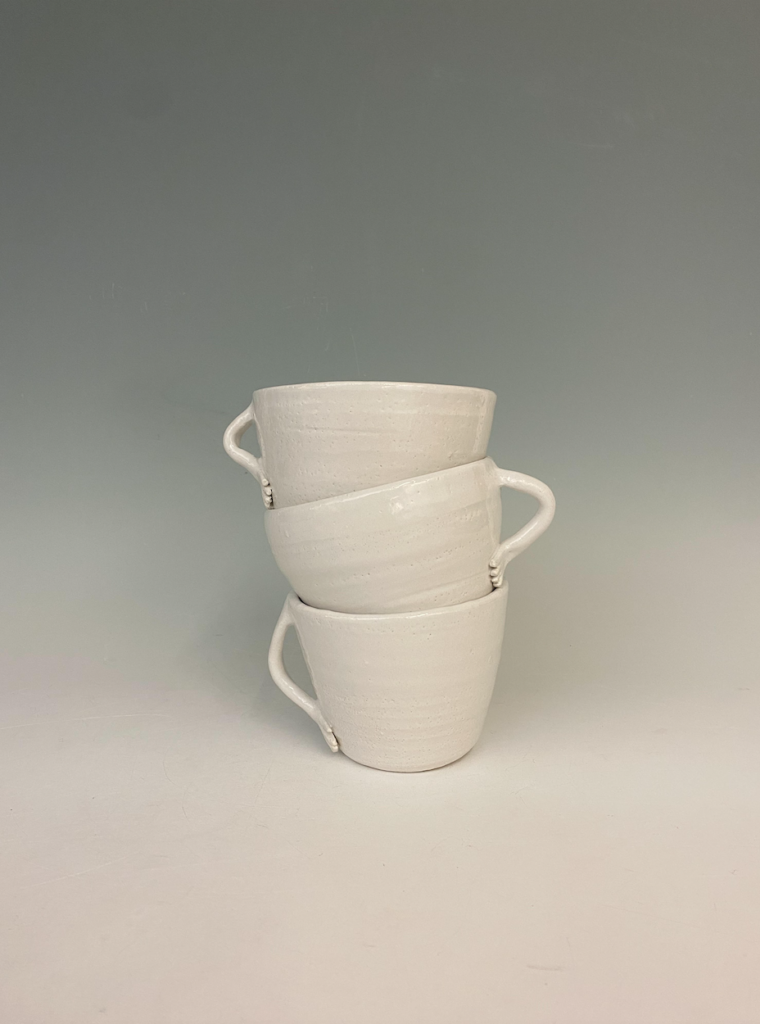
Zionpur’s works are thrown on a pottery wheel, a machine that allows the artist to shape clay atop a spinning wheel. This technique provides the opportunity to shape the piece in a symmetrical way as the artist watches it take shape under their hands.
“I love creating with my hands and having something tangible to work with. I can continue changing the clay and shaping it the way I want until I achieve my desired piece, which I love,” said Zionpur.
After throwing, ceramic artists allow the piece to dry before placing the piece back on the wheel and trimming it with specialized tools. This step of the ceramics process is more for cleaning up the piece before it is fired in the kiln for the first time.
“I use trimming and glazing more for decoration of the piece and fixing it up nicely,” said Zionpur.
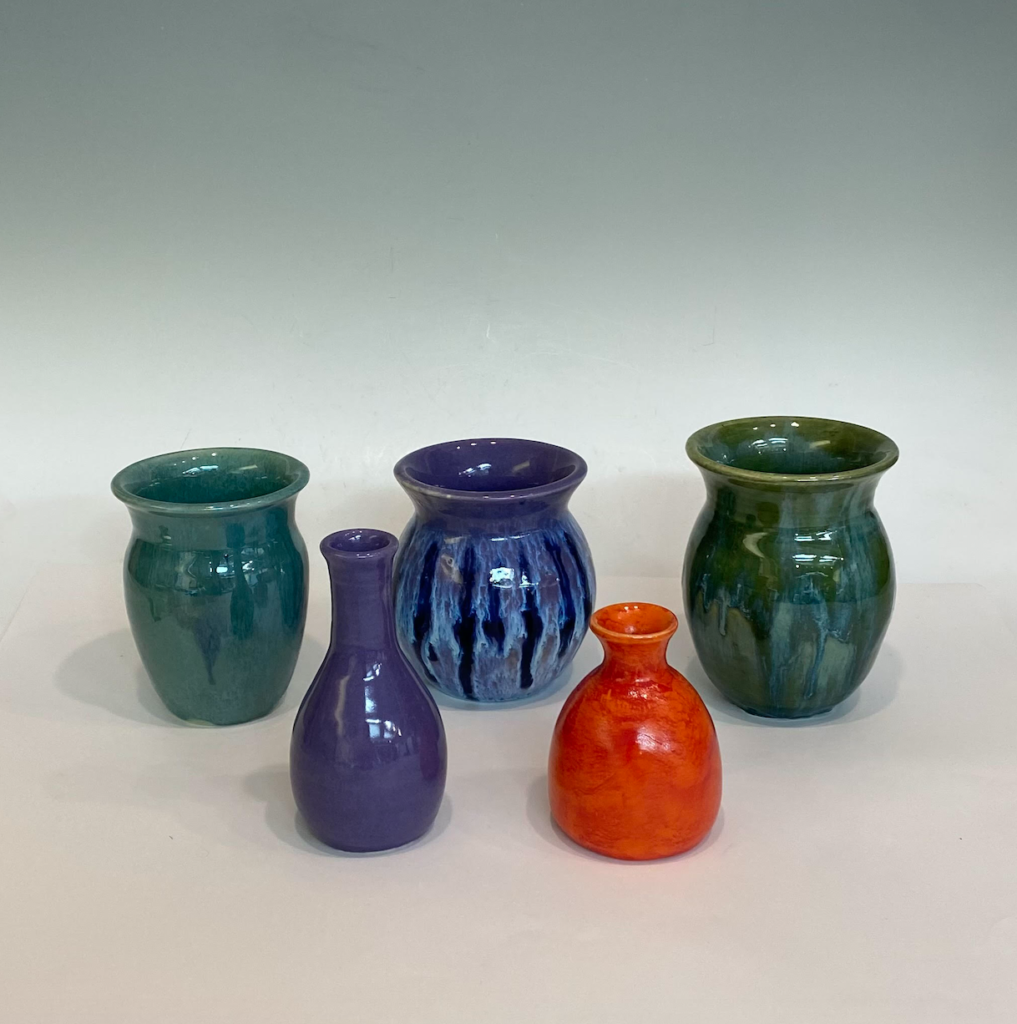
Once overglaze is applied and has been fired in the kiln, pieces are food safe, dishwasher safe, and ready for everyday use. Ceramics students often bring their finished pieces home to use for practical purposes.
“I really like to make a lot of functional pieces, like bowls, plates, and mugs. If the piece itself is plain, I usually make it more unique with the glazing process, which involves using a unique combination of colors and glazes or trying out new techniques,” said Zionpur.
These new techniques are often a gamble to see if they work out in the kiln. Students may have a prediction for how certain glazes will mix, but sometimes unexpected results happen. This means that the artist can either embrace the accident or go back to the creative process and try something else.
“My creative process isn’t very special. I usually have in mind what I’m going to create, and the rest is decided on the spot. A lot of times I will draw inspiration from other works found on Pinterest or in pottery catalogs,” said Zionpur.
While practical ceramic pieces at first may seem challenging to infuse with meaning, for Zionpur, displaying meaning is central to her work.
“My work is largely a display of myself and my identity and what I find interesting or captivating. I have a lot of personal additions within my piece that highlight a certain part of me, whether that’s my heritage, my family, or my interests,” said Zionpur.

